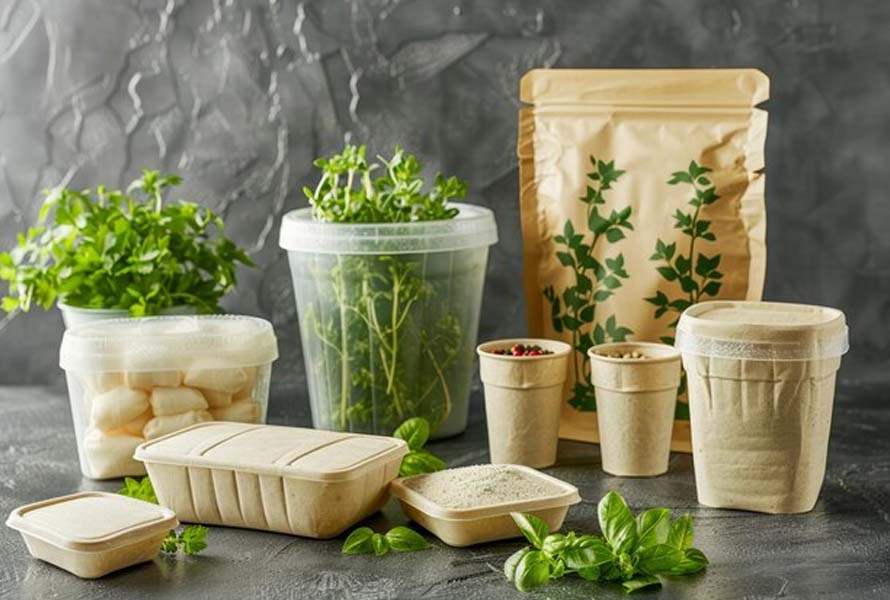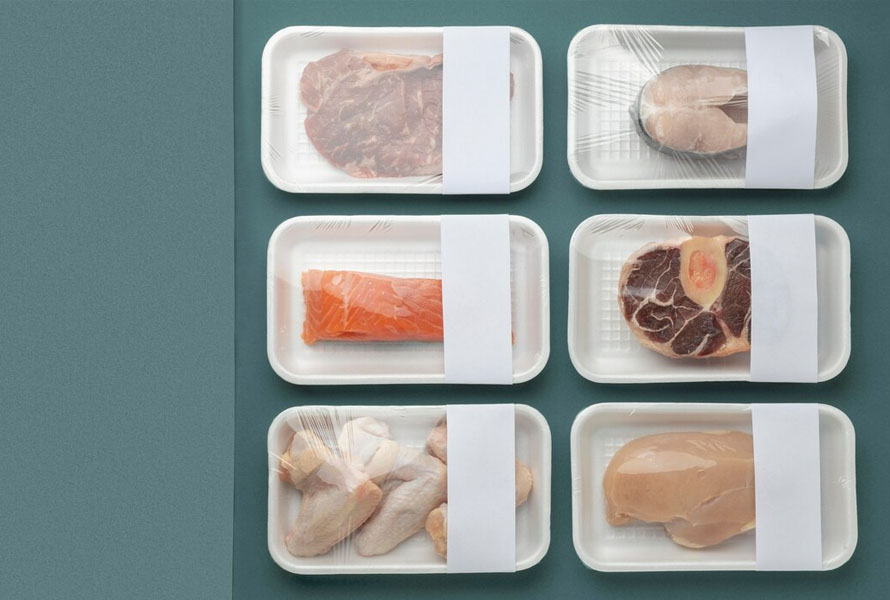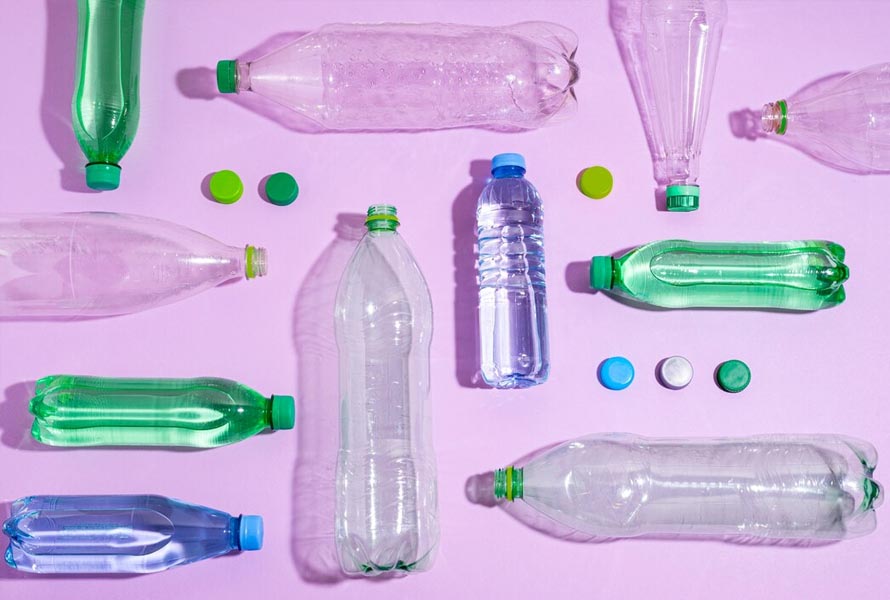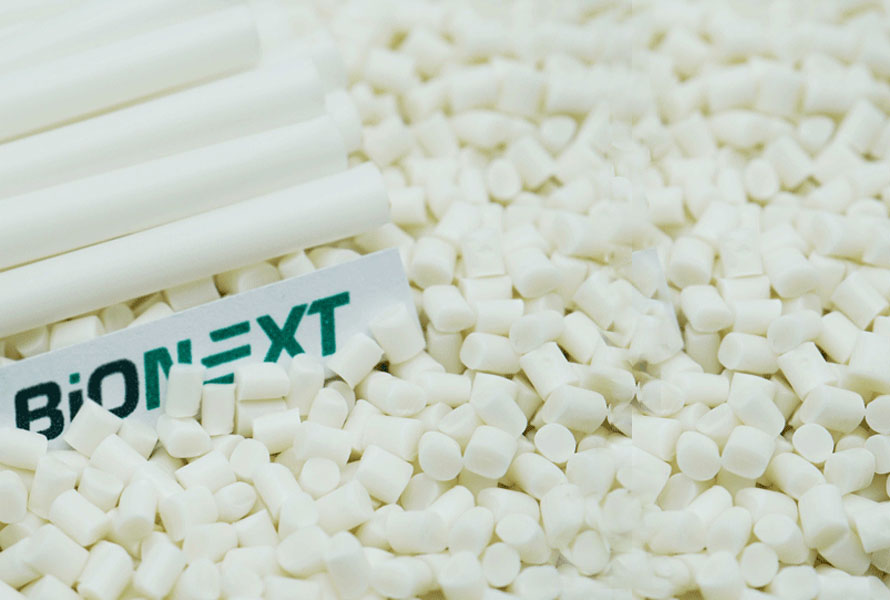Bioplastic Polymer vs. Biodegradable Plastic: Key Differences Explained
As sustainability becomes a key focus in material innovation, distinguishing between bioplastic polymers and biodegradable plastics is essential. Bioplastic polymers are derived from renewable sources like plants, but their ability to break down varies. In contrast, biodegradable plastics are specifically engineered to decompose naturally, regardless of their source. This guide explores the critical differences between the two, helping consumers and businesses make informed decisions about environmentally responsible materials in packaging, manufacturing, and beyond.
Read more: What are bioplastics made from? Materials to make bioplastics
1. Overview of Bioplastic Polymer and Biodegradable Plastic
The ever-growing concern about plastic pollution has led to a surge in the development of more sustainable alternatives. Among these innovative solutions are bioplastic polymers and biodegradable plastics. While often used interchangeably, these materials hold distinct characteristics and offer different environmental benefits.
1.1. Bioplastic Polymers: A Renewable Resource Base
Bioplastic polymers are derived from renewable resources such as corn starch, sugarcane, or cellulose. This provides a significant advantage over traditional plastics, which are primarily produced from fossil fuels. By utilizing renewable resources, bioplastic polymers contribute to a more sustainable life cycle and potentially lower carbon footprint. Bioplastic polymers can be engineered to possess a wide range of properties. Some mimic traditional plastics in terms of strength, flexibility, and transparency, making them suitable for various applications. However, not all bioplastic polymers are created equal.
1.2. Biodegradable Plastics: Designed for Decomposition
Biodegradable plastics, as the name suggests, are specifically designed to decompose under certain environmental conditions, typically involving microorganisms, heat, and moisture. They break down into natural elements like water, carbon dioxide, and biomass, offering a significant advantage in waste management.
Biodegradable plastics can be derived from both renewable and non-renewable resources, also both renewable biopolymers or petroleum-based sources. However, their primary focus lies in their ability to degrade efficiently in controlled environments like composting facilities or industrial composters (may require industrial processing rather than naturally decomposing in soil).
Both bioplastic polymers and biodegradable plastics play a vital role in promoting sustainability. Bioplastic polymers offer a renewable alternative to traditional plastics for various applications, while biodegradable plastics provide a solution for single-use items that can decompose quickly and naturally.

The choice between bioplastic polymers and biodegradable plastics depends on the specific needs and priorities of the application.
Read more: What are bioplastics made from? Materials to make bioplastics
2. Key Differences Between Bioplastic Polymers and Biodegradable Plastics
Bioplastic polymers and biodegradable plastics are often used interchangeably, but they are not the same. While both terms refer to environmentally friendly alternatives to traditional plastics, they have distinct characteristics and applications.
| Feature |
Bioplastic Polymers |
Biodegradable Plastics |
| Origin |
Derived from renewable resources (e.g., corn starch, sugarcane) |
Can be derived from renewable (e.g., plant-based) or non-renewable (e.g., fossil fuels) resources |
| Examples |
- Thermoplastic Starch (TPS)
- Polylactic Acid (PLA)
- Cellulose Acetate (CA)
- Bio-Polyethylene (Bio-PE)
- Polyhydroxyalkanoates (PHAs)
|
- Polylactic Acid (PLA) (can also be bioplastic)
- Starch Blends (often require specific composting)
- Polyhydroxybutyrate (PHB)
- Polycaprolactone (PCL) (slower degradation)
- Cellulosic Bioplastics
|
| Properties |
Can mimic a wide range of properties of traditional plastics (strength, flexibility, transparency) |
May have limitations in strength, durability, and heat resistance compared to traditional plastics |
| Biodegradability |
May or may not be biodegradable. Some may require specific composting conditions or persist in the environment like traditional plastics. |
Specifically designed to break down into natural elements under certain conditions (e.g., composting, industrial digestion) |
| Decomposition Process |
May require industrial composting or may not degrade naturally. For example, Bioplastics like PLA may be compostable under industrial conditions, but others (e.g., Bio-PE) are not biodegradable |
Breaks down into CO₂, water, and biomass, but degradation may require specific conditions (e.g., heat, microbes) |
| Environmental Focus |
Aims to reduce dependence on fossil fuels through the use of renewable resources |
Aims to minimize plastic pollution by ensuring post-use degradation |
| End-of-Life Options |
Used in packaging, consumer goods, and agriculture, where renewable sourcing is a priority (e.g., Bio-PE for bottles, PLA for food packaging) |
Common in single-use products like packaging and utensils for easier disposal (e.g., TPS in biodegradable packaging) |
| Eco-Benefits |
May offer a lower carbon footprint compared to traditional plastics due to the renewable resource base, but may not resolve waste issues. |
Offer a significant advantage in waste management by decomposing naturally under controlled conditions, reducing long-term pollution risks |
| Regulatory Standards |
Bioplastics like PLA may comply with standards like ASTM D6868 for compostability, but not all meet biodegradability standards |
Many biodegradable plastics are certified by standards like ASTM D6400 for compostability, ensuring proper degradation in controlled settings |
Read more: What are biodegradable plastics?
3. Advantages & Disadvantages
Bioplastic polymers and biodegradable plastics offer sustainable alternatives to traditional plastics, but they have distinct advantages and disadvantages. Understanding the pros and cons of bioplastic polymers and biodegradable plastics is essential for making informed choices in various applications.
| Feature |
Bioplastic Polymers |
Biodegradable Plastics |
| Advantages |
- Renewable resource base
- Reduced carbon footprint
- Can mimic properties of traditional plastics
- May be compostable in some cases
|
- Decompose naturally (under specific conditions)
- Reduce landfill waste
- May be derived from renewable resources
- Can reduce methane emissions
|
| Disadvantages |
- May not be biodegradable
- May require specific composting conditions
- Production may require more energy
- Can vary in properties
|
- May have limitations in strength, durability, and heat resistance
- Composting infrastructure may not be readily available
- May release methane during decomposition
- Not all are derived from renewable resources
|

While both bioplastic polymers and biodegradable plastics provide sustainable alternatives to traditional plastics, they each have their own unique strengths and weaknesses.
4. Applications of Bioplastic Polymer & Biodegradable Plastic
4.1. Applications of Bioplastic Polymer
Bioplastic polymers are making significant strides in replacing traditional plastics across various industries. Their appeal lies not only in their renewable resource base but also in their ability to mimic the properties of traditional plastics.
- Packaging: One of the most prevalent applications of bioplastics is in the packaging industry. Bioplastics, like PLA and PHA, are widely used in packaging (food packaging, containers, and bags) due to their excellent barrier properties against moisture and gas, making them suitable for preserving food quality.
- Agriculture: Bioplastics are utilized in agricultural films, mulch, and planting pots. These products aid in enhancing soil health and minimizing plastic pollution in the environment.
- Textiles: In the textile sector, bioplastic polymers are used to create sustainable fibers and fabrics. Materials like PLA are incorporated into clothing, offering benefits like breathability and moisture-wicking properties, which appeal to environmentally conscious consumers.
- Automotive: The automotive industry is leveraging bioplastics to produce interior components and exterior parts. These materials contribute to weight reduction, leading to improved fuel efficiency. Additionally, using renewable resources aligns with the industry's move towards sustainability.
- Medical Applications: In the medical field, bioplastics are gaining traction for their biocompatibility and biodegradability. They are used in drug delivery systems, surgical sutures, and implants, providing safer alternatives to traditional petroleum-based plastics.
- 3D Printing: The versatility of bioplastic polymers extends to the realm of 3D printing. These materials can be used to create functional prototypes and even finished products, offering a sustainable alternative to traditional 3D printing filaments.
- Construction: Bioplastics are making inroads into the construction industry as materials for insulation, pipes, and composite materials. They contribute to energy efficiency and sustainable building practices, aligning with green construction initiatives.
- Electronics: Some bioplastic polymers are being explored for use in electronics, particularly in casings and components, where they can offer environmental benefits without compromising performance.

Bioplastics packaging excels at preventing moisture and gas from penetrating, ensuring optimal food preservation.
4.2. Applications of Biodegradable Plastic
Biodegradable plastics offer a unique advantage over traditional plastics – their ability to decompose naturally under specific conditions. This makes them ideal for applications where managing waste is a crucial concern.
Food Packaging Applications
- Bottles: Biodegradable bottles can be manufactured using various techniques, such as injection or extrusion blowing, to replace traditional plastic bottles in industries like food and nutraceuticals.
- Food Containers and Trays: Compostable trays made from biodegradable plastics can be used for food packaging, eliminating the need for separate disposal of containers and food waste.
- Bags: Biodegradable bags for fruits and vegetables offer a sustainable alternative to traditional plastic bags, allowing for transportation, storage, and reuse for organic waste collection.
- Garbage Bags: Compostable garbage bags designed for organic waste can simplify waste management by eliminating the need for separate disposal of bags and organic matter.
- Coffee Capsules: Biodegradable coffee capsules can be composted along with coffee grounds, reducing waste and promoting sustainability.
- Packaging: Biodegradable plastics can be used to manufacture a wide range of packaging materials, such as films, sheets, and molded products, for various industries including food, cosmetics, and industrial applications.
- Disposable Tableware: Biodegradable plates, spoons, forks, cups, and other tableware can be made from biodegradable plastics to reduce plastic waste in single-use items.
Agricultural Applications
- Biodegradable Mulch: Compostable mulch films can be used in agriculture to cover the ground, preventing weed growth and improving soil moisture retention. These films degrade naturally in the soil, eliminating the need for waste collection.
- Plant Pots: Biodegradable plant pots are used for growing seedlings and plants. These pots can be made from compostable materials and can be planted directly into the garden, eliminating the need for repotting.
Textile Applications
- Biodegradable fibers can be woven or knitted into various textiles for clothing, upholstery, and other applications
- Non-woven fabrics made from biodegradable materials are used in products such as diapers and feminine hygiene products. These fabrics are designed to decompose after disposal, reducing the environmental impact associated with traditional non-biodegradable options.
Medical Applications
- Biodegradable plastics are used to manufacture sutures and stents that naturally break down in the body, eliminating the need for surgical removal and reducing the risk of infection.
- Creating temporary implants, such as screws, pins, and plates, for orthopedic applications, biodegradable plastics provide support to fractured bones and then degrade naturally as the bone heals, reducing the need for additional surgeries.
- Manufacturing medical instruments like syringes, catheters, and bandages using biodegradable plastic helps reduce the risk of cross-contamination. These products break down naturally in soil or water, offering an eco-friendly disposal option.
Construction
- Producing construction materials like plastic sheets and bricks from biodegradable plastic helps reduce environmental pollution. These materials naturally decompose in soil, offering a more sustainable solution for the construction industry.

Biodegradable bottles can be manufactured using various techniques, such as injection or extrusion blowing, to replace traditional plastic bottles
5. Conclusion
Ultimately, the choice between bioplastic polymers and biodegradable plastics depends on the specific needs and priorities of the application. Bioplastic polymers are derived from renewable sources but may not always biodegrade, whereas biodegradable plastics can decompose under specific conditions, regardless of their origin. Bioplastic polymers offer durability and versatility, while biodegradable plastics prioritize environmental sustainability.
By carefully considering the factors such as product lifespan, disposal methods, and desired end-of-life outcomes, consumers and industries can make informed decisions to minimize environmental impact and promote a circular economy.
6. About EuroPlas’ Bioplastics
EuroPlas, is a leading manufacturer of plastic additives and compounds based in Vietnam. With years of experience and innovation in the plastic industry, EuroPlas is committed to providing high-quality, environmentally friendly solutions. The company offers a diverse range of products, including filler masterbatch, color masterbatch, and technical compounds. One of EuroPlas' key innovations is the development of bioplastic polymer solutions, aimed at promoting sustainability in various industries.
Our bioplastic polymers are known under the trademark BiONext, and are introduced as a sustainable alternative to traditional plastics. These bio-based compounds are made from renewable sources such as polylactic acid (PLA) and polyhydroxyalkanoate (PHA).
One of the key benefits of BiONext is its biodegradability. Products made with BiONext degrade into water, CO2, and organic waste within a year, making them a solution aligned with closed-loop principles and sustainable development.

One of the key benefits of BiONext is its biodegradability
Besides their eco-friendly nature, BiONext bioplastic polymers boast good mechanical properties such as high stiffness, impact resistance, and elongation. This combination of benefits makes BiONext suitable for various applications, including plastic packaging, food packaging films, shopping bags, agricultural films, and disposable tableware.
Contact us today to learn more about how EuroPlas and our BiONext products can help you meet your sustainability goals.